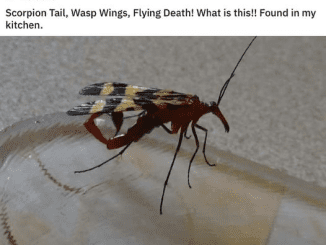One of the most remarkable shifts in the evolutionary history of humans and our primate relatives is the disappearance of our tails. Roughly 25 million years ago, this significant transformation took place, marking a pivotal point in the development of our species.
While the reasons behind this change have been debated for decades, the genetic mystery remained unsolved—until now. In a groundbreaking study recently published in the journal Nature, scientists have finally uncovered the genetic mechanism that led to the loss of our tails, offering new insights into human evolution.

The journey to uncovering why humans lost their tails began with an unexpected source of inspiration. Bo Xia, a graduate student at New York University, found himself intrigued by the origins of the human tailbone after injuring his own coccyx. This seemingly minor injury ignited a curiosity that would lead Xia and his colleagues on a path to a major scientific discovery.
Central to their research was the TBXT gene, a crucial player in regulating tail length across various species. Through meticulous investigation, the researchers identified a unique DNA mutation within this gene—a mutation that holds the key to understanding why humans and some primates are tailless. This discovery marks a massive breakthrough in our understanding of human evolution.
At the heart of this discovery are jumping genes, specifically Alu elements, which are unique to primates. These Alu elements play a significant role in creating genetic diversity and driving evolutionary change. By embedding themselves within the TBXT gene, these elements triggered a series of molecular events that ultimately led to the loss of our tails.

The insertion of Alu elements into the TBXT gene set off a process known as alternative splicing—a mechanism that went unrecognized in the context of tail evolution until now. During alternative splicing, RNA molecules are cut and rearranged, leading to the exclusion of a crucial exon. This change altered the structure and function of the resulting protein, which played a direct role in the loss of tails in our ancestors.
To validate their findings, the researchers conducted experiments on laboratory mice, genetically engineering them to carry the same mutations observed in humans and apes. The results were striking—the modified mice lost their tails, providing compelling evidence that the identified genetic mutation was responsible for this evolutionary change.
However, the study also revealed a downside to this adaptation: an increased susceptibility to neural tube defects, such as spina bifida. This finding highlights the complex interplay between genetic adaptations and the potential trade-offs that come with evolutionary changes.

The implications of this discovery extend far beyond evolutionary biology. The study offers profound insights into human anatomy and health, revealing that the loss of our tails was not a random event but a genetic adaptation with far-reaching consequences. Understanding this process provides a deeper appreciation for the intricate dance between genetic innovation and natural selection that has shaped our species.
As we reflect on this significant finding, we’re reminded of the relentless pursuit of knowledge that drives scientific inquiry. The discovery of the genetic reasons behind our tail loss stands as a testament to the power of curiosity and the potential of scientific research to unravel the mysteries of our origins.
The revelation of how humans lost their tails is a milestone in our understanding of evolution. By identifying the genetic mutation responsible, scientists have not only solved a long-standing mystery but also opened new doors to exploring the intricacies of human development. This discovery is a reminder that the secrets of our past are key to unlocking the mysteries of our future. As we continue to delve into the depths of our evolutionary history, we can expect more groundbreaking insights that will shape our understanding of what it means to be human.


